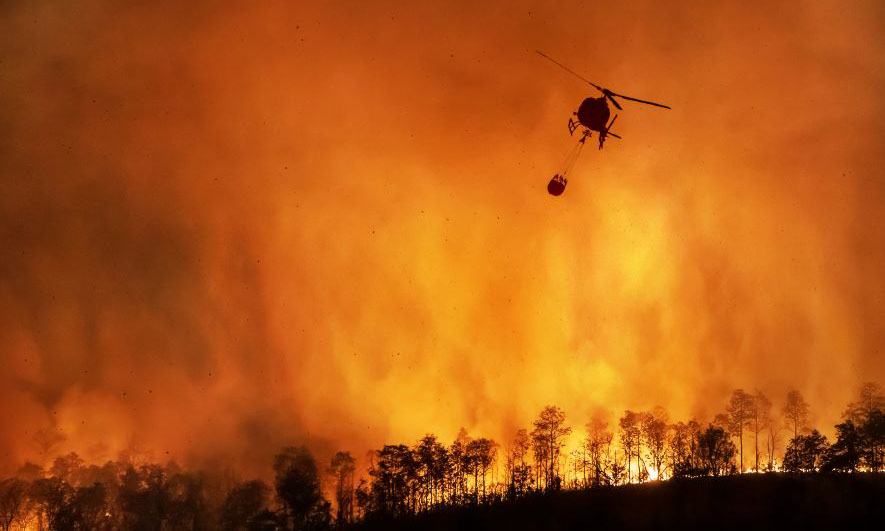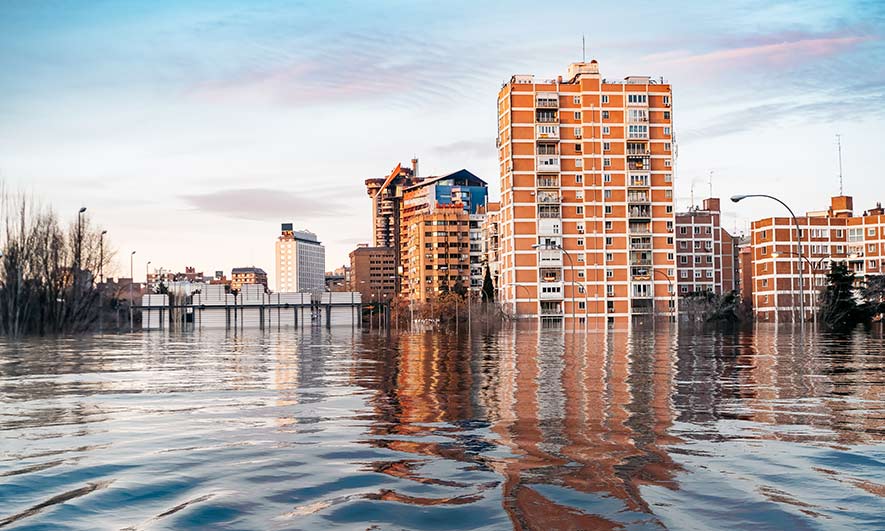What happens when a polar bear is attracted to the bright colors of a valve on an oil pipe? It gnaws away at it until the valve opens.
It may sound like a joke, but it’s a real environmental insurance claim scenario.
The oil pipe valve that the polar bear was attracted to belonged to a Canadian oil producer. And after it gnawed the valve, it led to a significant spill. The Canadian company’s environmental insurance policy paid for the cleanup, according to Robert Wade, an environmental insurance underwriter for Navigators. Without coverage, they would have had to deal with cleaning up the spill and paying for all the costs that accrued.
While the polar bear incident is unique, Wade said it emphasizes the importance of environmental insurance – a policy he believes will become more common. In fact, environmental claims are increasing in frequency.1
“Environmental insurance used to be reserved for specialist companies from sectors like industries, chemical production and water treatment,” Wade explained. “Now, because of increased awareness and importance of Environmental and Social Governance (ESG), it’s becoming much more mainstream.”
What Is Environmental Insurance?
Environmental insurance helps protect businesses from:
- Claims that a pollution incident caused bodily injury or property damage to someone else
- Clean-up costs related to a spill or other type of pollution incident
It’s typically mistaken that this coverage is part of a large business general liability insurance policy, Wade said. “Pollution” is generally excluded on liability policies. So, if the unexpected happens, companies find out that their general liability coverage won’t help with environmental claims or costs.
The Complexity and Cost of Environmental Claims
Environmental claims can be complex due to many factors. Details of the actual breach, where it happened and who it impacted are layers of issues that make these kinds of claims difficult to navigate. The complexity is also a reason why they can be so costly.
“One claim in the Arctic was so remote, it cost millions of dollars just to ship the equipment needed to cap the leak and make the site safe,” Wade noted.
Other recent claims that Navigators handled include a:
- Landfill site where excessive rain caused toxic liquid waste to run-off into a river
- Tank leak at a heli-skiing site at a ski resort that allowed diesel to spill down the mountain
- Middle Eastern chemical plant facing a class action lawsuit from nearby residents claiming their operations caused illness in the local population
Wade pointed out that it’s not just specialized businesses that may deal with environmental claims.
“There was a claim against a dentist practice in a U.S. shopping center from a woman who worked nearby,” Wade said. “She claimed that fumes from their dental processes were making her ill.”
Increased Focus on Environmental, Social and Governance (ESG) and Environmental Insurance
Wade explained that environmental insurance is becoming more important as laws and regulations around the world pushed businesses and executives to address their environmental footprint. Now, a growing number of companies around the world are putting greater emphasis on their environmental, social and governance (ESG) impact.
Another reason why companies are focusing on ESG? Attracting investors and increasing returns. Investing involved in ESG more than doubled in 2020 from 2019.2 People are investing in companies that they believe can make ESG changes.3
“That spotlight means that environmental insurance is a key part of global operations,” Wade said. “We provide protection for well-run companies who are on top of their environmental performance so that they can cope should an unforeseen crisis occur.”
Some international treaties, like the 2015 Paris Agreement, aim to limit global warming. To achieve this goal, countries – and the businesses operating within them – have to make changes on how they operate.
What Does Environmental Insurance Cover?
Environmental insurance helps cover large events that adversely affects the environment and people in the surrounding area.
“It’s often something catastrophic, like a fire or a mechanical breakdown that creates air pollutants or ground leakages,” Wade explained of the insurance coverage. “It might be aging equipment that has allowed some kind of chemical or solvent to leak into ground water for years without any obvious means of detection. It might be operator error, where a tank is accidentally over-filled, causing an explosion.”
Most importantly, Wade added, it gives businesses access to environmental experts who can coordinate a clean-up operation. Depending on the type of spill, these situations can have long-lasting effects on the environment. The environmental experts can help with monitoring and risk mitigation to avoid a similar situation in the future.
“Clean-ups can be highly technical,” he explained. “In the case of oil spills, it’s relatively easy to remove oil from water because it floats. But it gets more challenging when it reaches land. However, if you have a solvent leakage, it can soak through concrete and get into water courses. And that needs to be monitored for years after the event was first detected.”
Protecting Against Environmental Claims
While every business faces unique risks, there are general safety precautions and measures that companies can take to prevent environmental claims, according to John Munnings-Tomes, international chief risk engineer for The Hartford, who’s based in London.
Munnings-Tomes recommended businesses make sure plant designs are fit for purpose and it’s operated with “competent risk-aware staff.” This means:
- Ensuring risks are appropriately analyzed, assessed and managed. An in-depth understanding of risks the business poses to the environment, with appropriate risk management systems and procedures in place.
- Regularly maintaining business equipment and tools. Breakdowns can lead to air pollution that can affect the health of people in the area. Improperly maintained and inspected equipment can also fail and leak chemicals or other pollutants.
- Training staff and workers to correctly operate machinery and equipment to reduce different risks. For example, working with dangerous chemicals or materials can increase the risk of a fire or explosion.
- Conducting regular audits of plant operations and workers to ensure processes are completed at the required standard.
- Ensuring an open and robust investigation if there’s an incident.
Munnings-Tomes added that it’s better to be over-prepared when it comes to risk management – especially when it comes to environmental claims.
“Plan for the worse when it comes to emergency response capability because bad things can happen,” he emphasized.
Partnering with an experienced insurance company can also be beneficial in helping protect businesses from environmental claims. The Hartford, for instance, specializes in the unique needs of businesses in many industries. And through Navigators, businesses can experience:
- Industry-leading environmental products
- A dedicated environmental claims team
- Risk Engineering capabilities
- Underwriting expertise
The Hartford offers environmental insurance for our clients worldwide. Visit our International and U.S. pages to see how this coverage can help your business.
1 Willis Towers Watson, “Insurance Marketplace Realities 2021 – Environmental”
2,3 Cornell SC Johnson College of Business, “The Impact of ESG and Corporate Culture on Company Performance”
The information provided in these materials is intended to be general and advisory in nature. It shall not be considered legal or medical advice. The Hartford does not warrant that the implementation of any view or recommendation contained herein will: (i) result in the elimination of any unsafe conditions at your business locations or with respect to your business operations; or (ii) be an appropriate legal or business practice. The Hartford assumes no responsibility for the control or correction of hazards or legal compliance with respect to your business practices, and the views and recommendations contained herein shall not constitute our undertaking, on your behalf or for the benefit of others, to determine or warrant that your business premises, locations or operations are safe or healthful, or are in compliance with any law, rule or regulation. Readers seeking to resolve specific safety, legal or business issues or concerns related to the information provided in these materials should consult their safety consultant, attorney or business advisors. All information and representations contained herein are as of May 2022.






